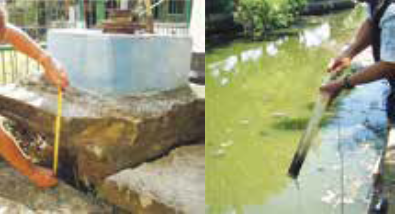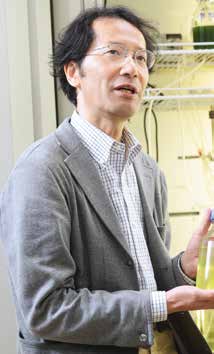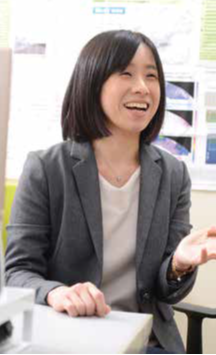Research Area : Water Environment and Sanitation
Wastewater to food production ~ a new wastewater treatment process with resource recovery
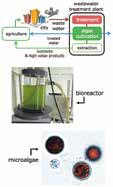 We are working on wastewater treatment process that is economically beneficial, and resources in wastewater are recovered and recycled for sustainable food production. Fertilizer including phosphorus is necessary to produce food. The demand of the fertilizer has been increasing to supply food for increasing population. However, fertilizer reserve is limited, and its production causes environmental pollution. To protect the environment and supply enough food for our children, we have been developing a new wastewater treatment process not only to treat the wastewater but also recover nutrients for fertilizer. More than that, we have been trying to increase the “value” of the recovered products using microalgae. This microalgae produces carotenoids such as b-carotene and astaxanthin, those are high value antioxidative pigments and are dealt with at a high price. The production of the pigment is the economical driving force of recovering nutrients from wastewater, finally to establish the sustainable food production.
We are working on wastewater treatment process that is economically beneficial, and resources in wastewater are recovered and recycled for sustainable food production. Fertilizer including phosphorus is necessary to produce food. The demand of the fertilizer has been increasing to supply food for increasing population. However, fertilizer reserve is limited, and its production causes environmental pollution. To protect the environment and supply enough food for our children, we have been developing a new wastewater treatment process not only to treat the wastewater but also recover nutrients for fertilizer. More than that, we have been trying to increase the “value” of the recovered products using microalgae. This microalgae produces carotenoids such as b-carotene and astaxanthin, those are high value antioxidative pigments and are dealt with at a high price. The production of the pigment is the economical driving force of recovering nutrients from wastewater, finally to establish the sustainable food production.
Understanding of chemical and biological reaction mechanisms by computer simulation
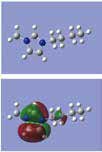
Computer simulation is a powerful tool to understand the mechanism of reactions such as degradation of pollutants in water treatment process, and oxidation reactions in microbial cell. Using the computer skills and the knowledge of physical chemistry including thermodynamics, we have been doing the simulation researches. One of the example is the degradation of ionic liquid with ozone. From which chemical bond does the degradation reaction occur? The simulation gives us the insight of the reactions.

Research Area : Water Environment and Sanitation
Evaluation of the groundwater function for conservation of coastal ecosystems
Seagrass and seaweed meadows are regarded as an important coastal ecosystems for their functions of “ecosystem service”, such as carbon stock and habitats. Though conservation of these meadows is a global issue for the healthy cycles of food and materials, their biomass has been decreasing worldwide. Diversity in the coastal environment (e.g. variation in salinity, water temperature, nutrients, bottom materials etc.), produced by both sea-factors and terrestrial-factors, is important for seagrass and seaweed meadows to coexist with the other primary producers. We evaluate the function of “submarine groundwater discharge (SGD)” for diversity production in the coastal environment by field observations, satellite data, and hydrological models.
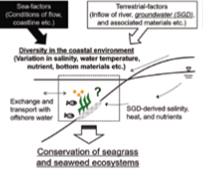
Human and climate impacts on water environment and water resources
Human activities in urban and rural areas alter the natural hydrologic and material cycles in watersheds. For example, overdrawing groundwater for drinking, irrigation, and industrial use increase the risks of water deficiency, land subsidence, contamination and salinization. Increase of nutrients (e.g. nitrogen, phosphorus) entering the environment by human activities(e.g. agriculture, industries) cause eutrophication of surface water environments and contamination of groundwater resources. We evaluate the current status and future outlook of water resources and environments based on field observations, chemical and isotopic analysis, and hydrological models for several countries in different climate zones, urbanization status, and cultures. We will also suggest the solutions for sustainable water-nutrient cycles for the future.
